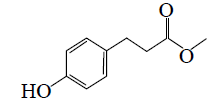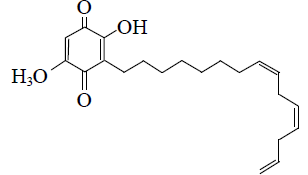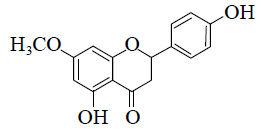Crops ›› 2023, Vol. 39 ›› Issue (6): 26-34.doi: 10.16035/j.issn.1001-7283.2023.06.004
Previous Articles Next Articles
Research Status and Prospects of Barren Tolerance and Nutrient Efficient Utilization in Sorghum
Zhang Fuyao1( ), Ping Jun’ai1(
), Ping Jun’ai1( ), Jiao Xiaoyan2
), Jiao Xiaoyan2
- 1Sorghum Institute, Shanxi Agricultural University/Key Laboratory of Genetic and Germplasm Innovation in Sorghum for Shanxi Province, Jinzhong 030600, Shanxi, China
2College of Resource and Environment, Shanxi Agricultural University, Taiyuan 030031, Shanxi, China
| [1] | Morris G P, Ramu P, Deshpande S P, et al. Population genomic and genome-wide association studies of agroclimatic traits in sorghum. Proceedings of the National Academy of Sciences of the United States of America, 2013, 110(2):453-458. |
| [2] | 邹剑秋, 朱凯, 张志鹏, 等. 国内外高粱深加工研究现状与发展前景. 杂粮作物, 2002, 22(5):296-298. |
| [3] | 张福耀, 赵威军, 平俊爱. 高能作物—甜高粱. 中国农业科技导报, 2006, 8(1):14-17. |
| [4] | 高士杰, 刘晓辉, 郭中校, 等. 中国杂交高粱的种质基础及优势利用模式研究. 中国农学通报, 2005, 21(10):106-108. |
| [5] |
Lemaire G, Charrier X, Hebert Y. Nitrogen uptake capacities of maize and sorghum crops in different nitrogen and water supply conditions. Agronomie, 1996, 16(4):231-246.
doi: 10.1051/agro:19960403 |
| [6] | Oikeh S O, Chude V O, Kling G J, et al. Comparative Productivity of nitrogen-use efficient and nitrogen-inefficient maize cultivar and traditional grain sorghum in the moist Savanna of West Africa. African Journal of Agricultural Research, 2007, 2(3):112-119. |
| [7] |
Vogan P J, Sage R F. Water-use efficiency and nitrogen-use efficiency of C3-C4 intermediate species of Flaveria Juss. (Asteraceae). Plant,Cell and Environment, 2011, 34(9):1415- 1430.
doi: 10.1111/pce.2011.34.issue-9 |
| [8] | Frink C R, Waggoner P E, Ausubel J H. Nitrogen fertilizer: retrospect and prospect. Proceedings of the National Academy of Sciences of the United States of America, 1999, 96(4):1175-1180. |
| [9] | 米国华. 论作物养分效率及其遗传改良. 植物营养与肥料学报, 2017, 23(6):1525-1535. |
| [10] | 陈范骏, 房增国, 高强, 等. 中国东华北部分地区玉米主推品种高产氮高效潜力分析. 中国科学:生命科学, 2013, 43(4):342-350. |
| [11] | 张桂香, 赵学孟, 高儒萍, 等. 高粱遗传资源的耐瘠性鉴定研究. 山西农业科学, 1997, 25(3):12-16. |
| [12] | 高儒萍, 张桂香, 张秋萍. 高粱耐瘠性状的基因表现. 山西农业科学, 2000, 28(2):30-32. |
| [13] | 白文斌, 张福跃, 焦晓燕, 等. 中国高粱产业工程技术研究的定位思考. 中国农学通报, 2013, 29(11):107-110. |
| [14] |
张彦, 王劲松, 董二伟, 等. 中晚熟区主要高粱品种耐瘠性综合评价. 中国农业科学, 2021, 54(23):4954-4968.
doi: 10.3864/j.issn.0578-1752.2021.23.003 |
| [15] | 王劲松, 焦晓燕, 丁玉川, 等. 粒用高粱养分吸收、产量及品质对氮磷钾营养的响应. 作物学报, 2015, 41(8):1269-1278. |
| [16] | 王瑞, 平俊爱, 张福耀, 等. 高粱育种资源耐瘠性鉴定及评价. 作物杂志, 2020(6):30-37. |
| [17] | 王玉斌, 平俊爱, 李慧明, 等. 高粱耐瘠薄品种的鉴定与分类. 安徽农业科学, 2020, 48(23):61-64. |
| [18] |
刘鹏, 武爱莲, 王劲松, 等. 不同基因型高粱的氮效率及对低氮胁迫的生理响应. 中国农业科学, 2018, 51(16):3074-3083.
doi: 10.3864/j.issn.0578-1752.2018.16.004 |
| [19] | 刘鹏, 武爱莲, 王劲松, 等. 不同基因型高粱的磷效率和磷素转运特性研究. 山西农业科学, 2018, 46(3):344-349. |
| [20] |
Gelli M, Duo Y, Konda A R, et al. Identification of differentially expressed genes between sorghum genotypes with contrasting nitrogen stress tolerance by genome-wide transcriptional profiling. BMC Genomics, 2014, 15(1):179.
doi: 10.1186/1471-2164-15-179 |
| [21] | 侯荷亭, 何策熙. 高粱晋辐1号的选育及其系谱分析. 山西农业科学, 1987(9):13-16. |
| [22] | 张桂香, 赵学孟, 高儒萍, 等. 高粱遗传资源的耐瘠性鉴定研发. 山西农业科学, 1997, 25(3):12-16. |
| [23] | 王成, 王劲松, 丁玉川, 等. 不同高粱基因型对氮磷钾缺乏的生物学响应. 山西农业科学, 2015, 43(9):1133-1137,1191. |
| [24] | 运旺, 马洪波, 许仙菊, 等. 氮磷钾缺乏对甘薯前期生长和养分吸收的影响. 中国农业科学, 2013, 46(3):486-495. |
| [25] | 丁玉川, 陈明昌, 程滨, 等. 不同大豆品种磷吸收利用特性比较研究. 西北植物学报, 2005, 25(9):1791-1797. |
| [26] | 高雪, 朱林, 苏莹. 基于隶属函数法的甜高粱孕穗期耐盐性综合评价. 南方农业学报, 2018, 49(9):1736-1744. |
| [27] | 申瑞玲, 陈明, 任贵兴. 高粱淀粉的研究进展. 中国粮油学报, 2012, 27(7):123-128. |
| [28] |
Fukunaga k, Kawase M, Kato K. Structural variation in the Waxy gene and differentiation in foxtail millet [Setaria italica (L.) P. Beauv.]: implication for multiple origins of the waxy phenotype. Molecular Genetics and Genomics, 2002, 268:214-222.
pmid: 12395195 |
| [29] | 孔令旗, 张文毅, 李振武. 高粱籽粒淀粉含量的配合力与杂种优势分析. 辽宁农业科学, 1992(1):18-20. |
| [30] | 詹鹏杰, 张福耀, 王瑞, 等. 不同淀粉类别高粱品种酿酒相关性能分析. 山西农业科学, 2013, 41(9):897-898,952. |
| [31] | 余飞, 邓丹霞, 董婧, 等. 直连淀粉含量的影响因素及其应用研究进展. 食品科学, 2007, 28(10):604-607. |
| [32] | 李超, 肖木辑, 周宇飞, 等. 不同播期对高粱籽粒淀粉含量的影响. 沈阳农业大学学报, 2009, 40(6):708-711. |
| [33] | 葛占宇, 马尚耀, 成慧娟, 等. 不同施氮水平对高粱子粒淀粉积累规律的影响. 东北农业科学, 2016, 41(2):25-29. |
| [34] | 曹昌林, 董良利, 宋旭东, 等. 氮、磷、钾配施对高粱籽粒淀粉含量的影响. 山东农业科学, 2010(5):68-70. |
| [35] | 高欣, 肖木辑, 周宇飞, 等. 种植密度对高粱子粒淀粉积累的影响. 作物杂志, 2009(6):35-37. |
| [36] | 黄瑞冬, 于泳, 肖木辑, 等. 施磷、钾肥对高粱籽粒淀粉积累规律的影响. 作物杂志, 2009(2):29-32 |
| [37] | 于泳, 黄瑞冬, 赵尚文, 等. 不同施氮水平对高粱籽粒淀粉积累规律的影响. 作物杂志, 2008(5):20-24. |
| [38] | 尹静, 胡胜连, 肖佳雷, 等. 不同形态氮肥对春小麦品种籽粒淀粉及其组分的调节效应. 作物学报, 2006, 32(9):1294-1300. |
| [39] |
王劲松, 董二伟, 武爱莲, 等. 不同肥力条件下施肥对粒用高粱产量、品质及养分吸收利用的影响. 中国农业科学, 2019, 52(22):4166-4176.
doi: 10.3864/j.issn.0578-1752.2019.22.020 |
| [40] | 卢庆善. 高粱学. 北京: 中国农业出版社, 1999. |
| [41] | 曹晓燕, 武爱莲, 王劲松, 等. 施氮量对高粱产量,品质及氮利用效率的影响. 作物杂志, 2021(2):108-115. |
| [42] | 戴廷波, 邹铁祥, 荆奇, 等. 氮、钾水平对小麦籽粒蛋白质合成关键酶活性的影响. 生态学报, 2009, 29(9):4976-4982. |
| [43] |
Mulimani V H, Supriya D. Tannic acid content in sorghum (Sorghum bicolour M.): effects of processing. Plant Foods for Human Nutrition, 1994, 46(3):195-200.
pmid: 7855089 |
| [44] | 宋高友, 苏益民, 陆伟. 酒用高粱育种方向的探讨. 核农学通报, 1996, 17(4):165-168. |
| [45] | 王劲松, 董二伟, 武爱莲, 等. 灌溉时期与施氮量对矮杆高粱产量和品质的影响. 灌溉排水学报, 2017, 36(增2):1-8. |
| [46] | Zhu Z, Li D, Wang P, et al. Transcriptome and ionome analysis of nitrogen, phosphorus and potassium interactions in sorghum seedlings. Theoretical and Experimental Plant Physiology, 2020 (32):271-285. |
| [47] |
Schlegel A J, Havlin J L. Irrigated grain sorghum response to 55 years of nitrogen, phosphorus, and potassium fertilization. Agronomy Journal, 2021, 113(1):464-477.
doi: 10.1002/agj2.v113.1 |
| [48] |
Hou X, Xue Q, Jessup K E, et al. Effect of nitrogen supply on stay-green sorghum in differing post-flowering water regimes. Planta, 2021, 254(4):63-74.
doi: 10.1007/s00425-021-03712-2 pmid: 34477992 |
| [49] | Cakmak I, Hengeler C, Marschner H. Partitioning of shoot and root dry matter and carbohydrates in bean plant suffering from phosphorus, potassium and magnesium deficiency. Journal of Experimental Bottany, 1994, 45(9):1245-1250. |
| [50] |
Nath M, Tuteja N. NPKS uptake, sensing, and signaling and miRNAs in plant nutrient stress. Protoplasma, 2016, 253(3):767-786.
doi: 10.1007/s00709-015-0845-y pmid: 26085375 |
| [51] | 黄瑞冬, 阚魏, 蒋文春. 高粱叶片硝酸还原酶活性及含氮量与产量相关性分析. 沈阳农业大学学报, 2008, 39(5):611-614. |
| [52] | 马建华, 王玉国, 孙毅, 等. 低磷胁迫对不同品种高粱苗期形态及生理指标的影响. 植物营养与肥料学报, 2013, 19(5):1083-1091. |
| [53] | Paungfoo-Lonhienne C, Lonhienne T G A, Rentsch D, et al. Plants can use protein as a nitrogen source without assistance from other organisms. Proceedings of the National Academy of Sciences of the United States of America, 2008, 105(11):4524- 4529. |
| [54] |
Näsholm T, Kielland K, Ganeteg U. Uptake of organic nitrogen by plants. New Phytologist, 2009, 182(1):31-48.
doi: 10.1111/j.1469-8137.2008.02751.x pmid: 19210725 |
| [55] |
Krapp A, David L C, Chardin C, et al. Nitrate transport and signalling in Arabidopsis. Journal of Experimental Botany, 2014, 65(3):789-798.
doi: 10.1093/jxb/eru001 pmid: 24532451 |
| [56] |
Tsay Y F, Chiu C C, Tsai C B, et al. Nitrate transporters and peptide transporters. FEBS Letters, 2007, 581(12):2290-2300.
doi: 10.1016/j.febslet.2007.04.047 |
| [57] |
Sohlenkamp C, Shelden M, Howitt S, et al. Characterization of Arabidopsis AtAMT2, a novel ammonium transporter in plants. FEBS Letters, 2000, 467(2/3):273-278.
doi: 10.1016/S0014-5793(00)01153-4 |
| [58] |
Neuhäuser B, Dynowski M, Mayer M, et al. Regulation of NH4+ transport by essential cross talk between AMT monomers through the carboxyl tails. Plant Physiology, 2007, 143(4):1651-1659.
pmid: 17337531 |
| [59] |
Wang Y Y, Hsu P K, Tsay Y F. Uptake, allocation and signaling of nitrate. Trends in Plant Science, 2012, 17(8):458-467.
doi: 10.1016/j.tplants.2012.04.006 |
| [60] |
Léran S, Varala K, Boyer J C, et al. A unified nomenclature of NITRATE TRANSPORTER1/PEPTIDE TRANSPORTER family members in plants. Trends in Plant Science, 2014, 19(1):5-9.
doi: 10.1016/j.tplants.2013.08.008 |
| [61] |
Wittgenstein N V, Le C H, Hawkins B J, et al. Evolutionary classification of ammonium, nitrate, and peptide transporters in land plants. BMC Evolutionary Biology, 2014, 14(1):1-11.
doi: 10.1186/1471-2148-14-1 |
| [62] |
Chiba Y, Shimizu T, Miyakawa S, et al. Identification of Arabidopsis thaliana NRT1/PTR FAMILY (NPF) proteins capable of transporting plant hormones. Journal of Plant Research, 2015, 128(4):679-686.
doi: 10.1007/s10265-015-0710-2 |
| [63] |
Bernard S M, Habash D Z. The importance of cytosolic glutamine synthetase in nitrogen assimilation and recycling. New Phytologist, 2009, 182(3):608-620.
doi: 10.1111/j.1469-8137.2009.02823.x pmid: 19422547 |
| [64] |
Urriola J, Rathore K S. Overexpression of a glutamine synthetase gene affects growth and development in sorghum. Transgenic Research, 2014, 24(3):397-407.
doi: 10.1007/s11248-014-9852-6 |
| [65] |
Crawford N, Glass A. Molecular and physiological aspects of nitrate uptake in plants. Trends Plant Science, 1998, 3(10):389- 395.
doi: 10.1016/S1360-1385(98)01311-9 |
| [66] |
Stitt M, Krapp A. The molecular physiological basis for the interaction between elevated carbon dioxide and nutrients. Plant Cell Environment, 1999, 22:583-622.
doi: 10.1046/j.1365-3040.1999.00386.x |
| [67] | Crawford N M, Campbell W H, Davis R W. Nitrate reductase from squash: cDNA cloning and nitrate regulation. Proceedings of the National Academy of Sciences of the United States of America, 1986, 83(21):8073-8076. |
| [68] | Lam H M, Coschigano K T, Oliveira I C, et al. The molecular- genetics of nitrogen assimilation into amino acids in higher plants. Annual Review of Plant Physiology & Plant Molecular Biology, 1996, 47(4):569-593. |
| [69] | Vidal E A, Araus V, Lu C, et al. Nitrate- responsive miR393/ AFB3 regulatory module controls root system architecture in Arabidopsis thaliana. Proceedings of the National Academy of Sciences of the United States of America, 2010, 107(9):4477- 4482. |
| [70] |
Zhu Z, Li D, Cong L, et al. Identification of microRNAs involved in crosstalk between nitrogen, phosphorus and potassium under multiple nutrient deficiency in sorghum. The Crop Journal, 2021, 9(2):465-475.
doi: 10.1016/j.cj.2020.07.005 |
| [71] |
Casa A M, Pressoir G, Brown P J, et al. Community resources and strategies for association mapping in sorghum. Crop Science, 2008, 48(1):30-40.
doi: 10.2135/cropsci2007.02.0080 |
| [72] | Karen M, Campbell B C, Mace E S, et al. Whole genome sequencing reveals potential new targets for improving nitrogen uptake and utilization in Sorghum bicolor. Frontiers in Plant Science, 2016, 7:1544. |
| [73] |
Cai H, Zhou Y, Xiao J, et al. Overexpressed glutamine synthetase gene modifies nitrogen metabolism and abiotic stress responses in rice. Plant Cell Reports, 2009, 28(3):527-537.
doi: 10.1007/s00299-008-0665-z |
| [74] | Fan X R, Feng H M, Tan Y W, et al. A putative 6-transmembrane nitrate transporter OsNRT1.1b plays a key role in rice under low nitrogen. National Natural Science Foundation of China, 2016, 58(6):590-599. |
| [75] |
Chiu C C, Lin C S, Hsia A P, et al. Mutation of a nitrate transporter, AtNRT1:4, results in a reduced petiole nitrate content and altered leaf development. Plant and Cell Physiology, 2004, 45 (9):1139-1148.
pmid: 15509836 |
| [76] |
De Angeli A, Monachello D, Ephritikhine G, et al. The nitrate/ proton antiporter AtCLCa mediates nitrate accumulation in plant vacuoles. Nature, 2006, 442(7105):939-942.
doi: 10.1038/nature05013 |
| [77] |
Upadhyaya H D, Pundir R P S, Dwivedi S L, et al. Developing a mini core collection of sorghum for diversified utilization of germplasm. Crop Science, 2009, 49(5):1769-1780.
doi: 10.2135/cropsci2009.01.0014 |
| [78] |
Tesfamariam T, Yoshinaga H, Deshpande S P, et al. Biological nitrification inhibition in sorghum: the role of sorgoleone production. Plant and Soil, 2014, 379(1/2):325-335.
doi: 10.1007/s11104-014-2075-z |
| [79] |
Subbarao G V, Nakahara K, Ishikawa T, et al. Biological nitrification inhibition (BNI) activity in sorghum and its characterization. Plant and Soil, 2013, 366(1/2):243-259.
doi: 10.1007/s11104-012-1419-9 |
| [80] | Talwar H S, Subbarao G V, Swarna R, et al. Biological nitrification inhibition (BNI) potential and its role in improving the nitrogen use efficiency (NUE) in sorghum. Breeding Science, 2020:209-230. |
| [81] | 陆玉芳, 施卫明. 生物硝化抑制剂的研究进展及其农业应用前景. 土壤学报, 2021, 58(3):545-557. |
| [82] |
Subbarao G V, Rondon M, Ito O, et al. Biological nitrification inhibition (BNI)-is it a widespread phenomenon?. Plant and Soil, 2007, 294(1/2):5-18.
doi: 10.1007/s11104-006-9159-3 |
| [83] |
Zakir H A K M, Subbarao G V, Pearse S J, et al. Detection, isolation and characterization of a root-exuded compound,methyl 3-(4-hydroxyphenyl) propionate, responsible for biological nitrification inhibition by sorghum (Sorghum bicolor). New Phytologist, 2008, 180(2):442-451.
doi: 10.1111/nph.2008.180.issue-2 |
| [84] |
Nardi P, Akutsu M, Pariasca-Tanaka J, et al. Effect of methyl 3-4-hydroxyphenyl propionate, a Sorghum root exudate, on N dynamic, potential nitrification activity and abundance of ammonia-oxidizing bacteria andarchaea. Plant and Soil, 2013, 367(1/2):627-637.
doi: 10.1007/s11104-012-1494-y |
| [85] |
Subbarao G V, Nakahara K, Ishikawa T, et al. Biological nitrification inhibition (BNI) activity in sorghum and its characterization. Plant and Soil, 2013, 366(1/2):243-259.
doi: 10.1007/s11104-012-1419-9 |
| [86] |
Zhu Y Y, Zeng H Q, Shen Q R, et al. Interplay among NH4+ uptake, rhizosphere pH and plasma membrane H+-ATPase determine the release of BNIs in sorghum roots-possible mechanisms and underlying hypothesis. Plant and Soil, 2012, 358(1/2):131-141.
doi: 10.1007/s11104-012-1151-5 |
| [87] |
Zeng H Q, Di T J, Zhu Y Y, et al. Transcriptional response of plasma membrane H+-ATPase genes to ammonium nutrition and its functional link to the release of biological nitrification inhibitors from sorghum roots. Plant and Soil, 2016, 398(1/2):301-312.
doi: 10.1007/s11104-015-2675-2 |
| [88] |
Liu Y Y, Wang R L, Zhang P, et al. The nitrification inhibitor methyl 3-(4-hydroxyphenyl) propionate modulates root development by interfering with auxin signaling via the NO/ROS pathway. Plant Physiology, 2016, 171(3):1686-1703.
doi: 10.1104/pp.16.00670 |
| [89] |
Zhang X N, Lu Y F, Yang T, et al. Factors influencing the release of the biological nitrification inhibitor 1, 9-decanediol from rice (Oryza sativa L.) roots. Plant and Soil, 2019, 436(1/2):253-265.
doi: 10.1007/s11104-019-03933-1 |
| [90] |
Di T J, Afzal M R, Yoshihashi T, et al. Further insights into underlying mechanisms for the release of biological nitrification inhibitors from sorghum roots. Plant and Soil, 2018, 423(1/2):99-110.
doi: 10.1007/s11104-017-3505-5 |
| [91] |
Czarnota M A, Paul R N, Weston L A, et al. Anatomy of sorgoleone-secreting root hairs of Sorghum species. International Journal of Plant Sciences, 2003, 164(6):861-866.
doi: 10.1086/378661 |
| [92] | 储成才, 王毅, 王二涛. 植物氮磷钾养分高效利用研究现状与展望. 中国科学:生命科学, 2021, 51(10):1415-1423. |
| [93] |
Liu Y, Wang H, Jiang Z, et al. Genomic basis of geographical adaptation to soil nitrogen in rice. Nature, 2021, 590:600-605.
doi: 10.1038/s41586-020-03091-w |
| [94] |
Zhang M Q, Fan C H, Li Q L, et al. A 2-yr field assessment of the effects of chemical and biological nitrification inhibitors on nitrous oxide emissions and nitrogen use efficiency in an intensively managed vegetable cropping system. Agriculture,Ecosystems and Environment, 2015, 201:43-50.
doi: 10.1016/j.agee.2014.12.003 |
| [95] | 张启发. 绿色超级稻培育的设想. 分子植物育种, 2005, 3(5):601-602. |
| [96] |
Yang J, Wang M, Li W, et al. Reducing expression of a nitrate- responsive bZIP transcription factor increases grain yield and N use in wheat. Plant Biotechnology Journal, 2019, 17(9):1823- 1833.
doi: 10.1111/pbi.v17.9 |
| [1] | Hao Zhiyong, Yang Guangdong, Hu Zunyan, Li Jinghua, Sun Bangsheng, Chen Linqi. Effects of Different Fertilizers on Yield, Agronomic Characteristics and Quality of Early Maturing Sorghum [J]. Crops, 2023, 39(6): 218-223. |
| [2] | Liu Yan, Qu Hang, Xing Yuehua, Wang Xiaohui, Gong Liang. Effects of New Types of Nitrogen Fertilizer on Rice Growth, Nitrogen Use Efficiency and Economic Benefit [J]. Crops, 2023, 39(5): 110-116. |
| [3] | Wang Yifan, Ren Ning, Dong Xiangyang, Zhao Yanan, Ye Youliang, Wang Yang, Huang Yufang. Effects of Controlled-Release and Ordinary Urea on Wheat Yield, Nitrogen Absorption and Economic Benefit [J]. Crops, 2023, 39(5): 117-123. |
| [4] | Hu Rui, Hu Xiangyu, Fu Youqiang, Ye Qunhuan, Pan Junfeng, Liang Kaiming, Li Meijuan, Liu Yanzhuo, Zhong Xuhua. Effects of Nitrogen Fertilizer Management on Rice Root Growth and Development and Its Relationships with Nitrogen Fertilizer Uptake and Utilization [J]. Crops, 2023, 39(5): 179-186. |
| [5] | Chen Bingru, Yu Miao, Shi Guishan, Wang Jianghong, Tang Yujie, Xu Chen, Li Haiqing, Xu Ning, Zhou Ziyang, Wang Nai. Breeding and Application of Elite Waxy Sorghum Male Sterile Line “Ji 5535A” [J]. Crops, 2023, 39(4): 260-266. |
| [6] | Liu Yu, Cao Jialin, Xiao Zhengwu, Zhang Mingyu, Chen Jia’na, Cao Fangbo, Huang Min. Effects of Nitrogen Application Rates on Yield and Nitrogen Use Efficiency of Super Hybrid Rice Y-liangyou 900 [J]. Crops, 2023, 39(2): 126-130. |
| [7] | Xiao Jibing, Liu Zhi, Kong Fanxin, Xin Zongxu, Wu Hongsheng. Analysis of Agronomic Traits and Yield Stability of Sorghum Varieties Based on GGE Biplot [J]. Crops, 2023, 39(2): 36-45. |
| [8] | Wang Qi, Xu Yanli, Yan Peng, Dong Haosheng, Zhang Wei, Lu Lin, Dong Zhiqiang. Effects of Polyaspartic Acid-Chitosan on Agronomic Traits, Yield and Nitrogen Use of Spring Foxtail Millet [J]. Crops, 2023, 39(1): 58-67. |
| [9] | Zhang Ruidong, Liang Xiaohong, Liu Jing, Nan Huailin, Wang Songyu, Cao Xiong. Effects of Seed Priming on Germination and Physiological Characteristics of Sorghum Seeds under Drought Stress [J]. Crops, 2022, 38(6): 234-240. |
| [10] | Wang Yubin, Niu Hao, Lü Xin, Chu Jianqiang, Wang Rui, Fan Fangfang, Ju Lan, Li Huiming, Ping Jun’ai. Influence of Barren Stress on Main Agronomic Traits and Evaluation of Barren-Tolerance in Sorghum Varieties [J]. Crops, 2022, 38(5): 78-86. |
| [11] | Li Ning, Liu Tongtong, Yang Jinwen, Shi Yugang, Wang Shuguang, Sun Daizhen. Analysis of Physiological Differences of Wheat Varieties with Different Nitrogen Use Efficiency [J]. Crops, 2022, 38(5): 87-96. |
| [12] | Zhang Haipeng, Chen Zhiqing, Wang Rui, Lu Hao, Cui Peiyuan, Yang Yanju, Zhang Hongcheng. Effects of Nitrogen Fertilizer Combined with Nano-Magnesium on Rice Yield, Grain Quality and Nitrogen Use Efficiency [J]. Crops, 2022, 38(4): 255-261. |
| [13] | Wang Baojun, Cheng Wangda, Shen Yaqiang, Qin Yebo, Su Yao, Chen Gui, Lu Chenni, Zhang Hongmei. Effects of Nitrogen Fertilizer Reduction on Grain Protein of High Quality Rice and Its Rationality Evaluation [J]. Crops, 2022, 38(3): 168-173. |
| [14] | Li Feng, Gao Tongmei, Su Xiaoyu, Wei Libin, Wang Dongyong, Tian Yuan, Li Tongke, Yang Zihao, Wei Shuangling. Effects of Nitrogen Rate and Planting Density on Photosynthetic Rate, Yield, Nitrogen Use Efficiency of Sesame [J]. Crops, 2022, 38(2): 215-221. |
| [15] | Li Xu, Fu Lidong, Wang Yu, Sui Xin, Ren Hai, Lü Xiaohong, Ma Chang, Du Meng, Mao Ting. Effects of Genetic Interaction between DEP1 and NRT1.1B on Nitrogen Use in Rice [J]. Crops, 2021, 37(6): 22-27. |
|
||


